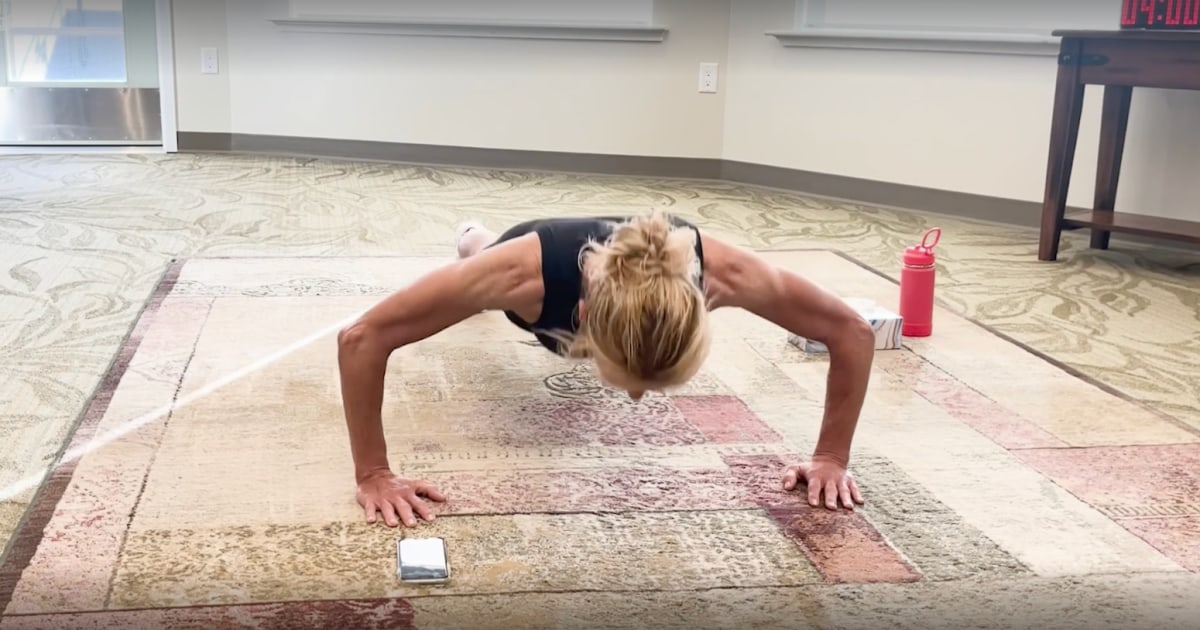Fitness
No, Core and Abs Exercises Aren’t the Same—Fitness Pros Break Down the Differences

However, there are some key differences between your abs and core. In simple terms, your core includes your abs, but your abs don’t encompass all of your core. And while strong abs are important, it’s not enough to just train your abs and neglect the rest of your core.
To better understand the nuances between core versus abs exercises and get step-by-step instructions on how to strengthen both, we chatted with two fitness pros.
What is your core?
Your core encompasses everything from your hips to the bottom of your chest, says certified personal trainer and functional strength coach Mathew Forzaglia, CPT, CFSC, founder of Forzag Fitness. “We’re talking about your pelvic floor, internal and external obliques, transverse abdominals, rectus abdominals, and spinal erectors,” he explains.
You can think of your core as a corset or weightlifting belt, and it also includes the quadratus lumborum muscle in your lower back, says physical therapist and certified strength and conditioning specialist Grayson Wickham, PT, DPT, CSCS, founder of Movement Vault. “When we think about the core, we’re thinking about all the muscles that wrap around the midsection,” he explains.
The core is a source of support and stability. It protects your organs and spine and allows you to maintain an upright posture and manage pressure in your abdomen. Your core muscles are also involved in flexion, lateral flexion, extension, and rotation of the trunk. In other words, twisting, side-bending, arching, and rounding your back are all possible because of the core.
What are your abs?
Most people use the term “abs,” short for abdominal muscles, to refer to the rectus abdominis. “These are the ‘six-pack abs’ you see from the front of your body,” Forzaglia says. Your abs work to flex your spine and protect the internal organs behind them.
Technically speaking, your abs are more than just the rectus abdominis and also include your internal and external obliques, transverse abdominis, and pyramidalis, a small muscle that’s believed to tense the connective tissue that runs down the middle of your rectus abdominis.
Like your core, your abs provide support, stability, mobility, internal pressure regulation, and protection.
“We’ve got to remember that everyone’s an athlete. Everyone has to move throughout their day.” —Grayson Wickham, PT, DPT, CSCS
The difference between your core and your abs
While your abs are a section of your core, your core contains your abdominal muscles and all the other muscles that make up your midsection, including the muscles of your pelvic floor, spinal erectors, and quadratus lumborum. Essentially, “the core” is a broad, umbrella term that refers to the entire midsection, and “abs” denotes a specific muscle group within the core.
The benefits of a strong core
If you think about your body as a house, the core is its frame, Forzaglia says. “If you have a weak frame, then the rest of the house will be prone to breaking down,” he says, noting that an unstable core can lead to imbalances and movement compensations that may result in injuries.
A weak core may also generate feelings of tightness in other parts of the body, especially your hips, Wickham says. “Your body is always seeking stability. So if you don’t have stability in your core, it’s going to most likely steal it from the next available joint,” he says.
Strengthening your core will not only protect you against inefficient movement patterns, pain, and injuries, but it can also help improve your posture by counteracting the hours spent in a seated or slouched position. And research1 shows that a strong core can bolster performance by optimizing power and movement control in athletes.
“And we’ve got to remember that everyone’s an athlete,” Wickham says. “Everyone has to move throughout their day. Everyone has to do some type of athletic movement, whether that’s reaching down and twisting to pick up a 10-pound box or snatching a barbell off the ground.”
The best core exercises to add to your workouts
Fire up your entire midsection during your next strength workout with these core exercises, demonstrated by Forzaglia. Choose a couple to incorporate into your routine, or perform them back-to-back in a core-focused circuit. You’ll need a large exercise ball and at least one set of dumbbells or kettlebells.
1. Bear crawl
- Start on all fours in a tabletop position, wrists directly underneath shoulders and knees under hips.
- Keeping your back flat, neck neutral, and core engaged, lift your knees an inch or two off the floor.
- Simultaneously, step your right hand and left foot forward. Then, step your left hand and right foot forward.
- Continue to move forward using the opposite arm and leg for the prescribed number of steps or distance.
- Then, step backward in the same contralateral movement pattern to return to your starting point.
- Repeat.
2. Stir the pot
- Kneel in front of a large exercise ball and place your forearms on top of it.
- Lift your knees off the ground and shift your weight forward onto the ball so you’re in an elevated plank position.
- Keeping your torso and hips stationary, circle your arms clockwise to “stir the pot.”
- Then, circle your arms in a counter-clockwise direction.
- Repeat, alternating direction, for the prescribed number of reps.
3. Half-kneeling halo
- Start in a half-kneeling position with your right foot in front of you and your left foot behind you.
- With both hands, hold a kettlebell or dumbbell at chin level.
- Circle the weight around your head in a “halo” pattern: Raise the weight to the outside of your left ear, bring it around the back of your head and toward your right ear, and then end the circle in front of your face at chin level.
- Repeat the halo motion, moving in the opposite direction.
- Repeat the sequence for the prescribed number of reps.
4. Farmer’s carry
- With a kettlebell or dumbbell in each hand, stand with your feet hip-width apart and your arms at your sides. Keep your shoulders back, chin level, and core engaged.
- Slowly walk forward for the prescribed number of steps or distance. Focus on keeping your chest up and your rib cage stacked over your hips.
The best abs exercises to add to your routine
For a more abs-focused workout, challenge yourself with these four movements demonstrated by Forzaglia. As with the core exercises, you can work them into your training or complete all four as a circuit. You’ll need an abs roller, a pull-up bar, and a heavy weight or stable structure, like a weightlifting rig or pole.
1. Abs rollout
- Start in a kneeling position. Hinge forward at your hips and, with your shoulders positioned directly over your wrists, grip the handles of an abs roller.
- Keeping your abs engaged and arms straight, lean forward at your knees, allowing the abs roller to roll out in front of you. Go only as far as you can while keeping your back flat and neck neutral.
- Contracting your abs, roll the abs roller back to the starting position.
- Repeat for the prescribed number of reps.
2. Hanging knee lift
- Grab an overhead bar with your hands positioned slightly wider than shoulder-width apart, palms facing away from your body.
- Lift your feet off the ground so that you’re hanging from the bar.
- Keep your core engaged and shoulders packed down (don’t allow your shoulders to shrug up around your ears), and draw your knees up toward your chest.
- Lower your feet, but don’t allow them to rest on the floor.
- Draw your knees up to your chest again.
- Repeat for the prescribed number of reps.
3. Dragonfly
- Lie on your back and lift your arms straight overhead. Hold a heavy weight or the base of a stable structure, like a pole or weightlifting rig, for stability.
- Keep your lower back in contact with the ground and lift your feet an inch or two off the floor with straight legs. (If your lower back arches, lift your legs higher.) This is the starting position.
- Lift your legs so that your knees and ankles are directly over your hips, then use your abs to lift your hips off the ground.
- Slowly lower your hips and legs until your feet are an inch or two from the ground or higher.
- Repeat for the prescribed number of reps.
4. Hollow hold
- Lie your back and lift your arms straight overhead.
- Engage your core and lift your shoulders, arms, legs, and feet off the ground. (The closer to the ground you keep your legs and feet, the harder the exercise.) Keep your neck neutral and your legs straight and together.
- Hold a hollow-body position for the prescribed amount of time.
Well+Good articles reference scientific, reliable, recent, robust studies to back up the information we share. You can trust us along your wellness journey.
-
Luo S, Soh KG, Soh KL, Sun H, Nasiruddin NJM, Du C, Zhai X. Effect of Core Training on Skill Performance Among Athletes: A Systematic Review. Front Physiol. 2022 Jun 6;13:915259. doi: 10.3389/fphys.2022.915259. PMID: 35755428; PMCID: PMC9227831.








